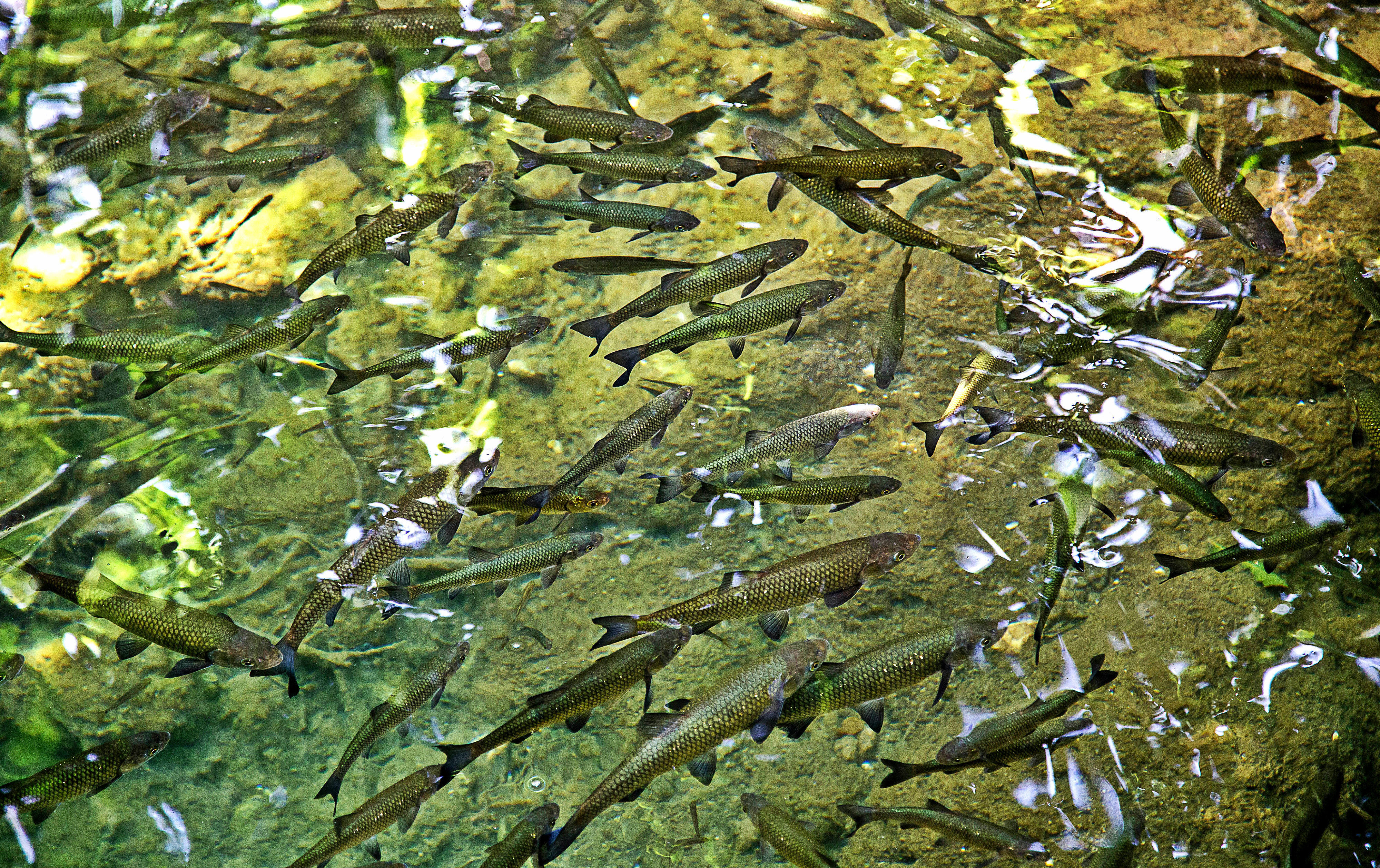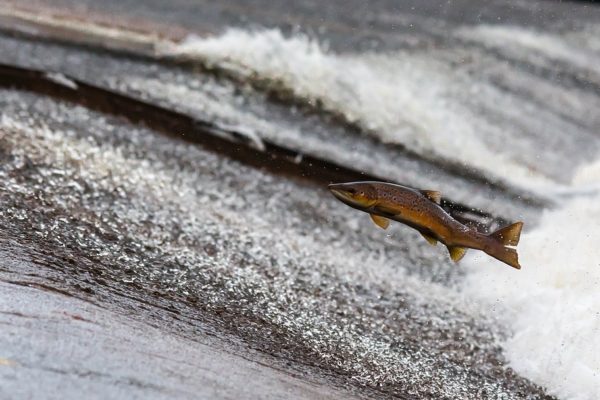
Insect based feed for animals
in aquaculture in the EU
25.10.2017 / Scienceandmore / Category: Animal Biology
Recent changes in EU legislation allow feeding of animals in aquaculture with processed animal protein (PAP) from insects since July 2017. This amendment mainly affects insect meal (dried insects ground to meal) that consists of protein to a big proportion, especially when it is defatted. Oil from insects, as well as fresh or unprocessed dried insects are not included in this restrictions by EU legislation and can be fed to animals in aquaculture, pets, poultry and pigs. Here the question arises, why would insect meal be preferred over fresh and dried insects? Insect meal can be mixed with other feed components such as ground grains and soy to form a mixture of desired composition that is then pressed in pellets for better and more convenient feeding to animals.
Animals in aquaculture are mostly reared by the five EU member states Spain, UK, France, Italy and Greece, who produce around 75 % of the animals in the EU. 294,000 tons of animals in aquaculture were reared by Spain (equals 23.0 % of the EU total, with a worth of approximately €513 million), 212,000 tons by the UK (16.6 %, €995 million), 180,000 tons by France (14.1 %, €627 million), 149,000 tons by Italy (11.6 %, €437 million) and 106,000 tons by Greece (8.3 %, €463 million) (1). Here, the most relevant and important animals are molluscs and fish, and the following 10 species account for around 90 % of the total weight in the EU in descending order:
1) Mediterranean mussel (Mytilus galloprovincialis), 2) Atlantic salmon (Salmo salar), 3) rainbow trout (Oncorhynchus mykiss), 4) blue mussel (Mytilus edulis), 5) gilt-head seabream (Sparus aurata), 6) Pacific oyster (Magallana gigas), 7) European bass (Dicentrarchus labrax), 8) common carp (Cyprinus carpio), 9) Japanese carpet shell (Venerupis philippinarum), and 10) Atlantic bluefin tuna (Thunnus thynnus).
This is stated with the annotation that the EU consists of different countries with different geography, and that the various fish species also have different natural habitats. 95% of the Atlantic salmon is reared in the UK, and 87% of Pacific oyster in France for instance (1). At the same time, other species have wider dissemination. Rainbow trout for example is reared by 17 of the EU member states and the common carp by 13 states as one of their major fish species (2).

In terms of species-specific feed in the wild, the three molluscs Mediterranean mussel, blue mussel and Pacific oyster consume bacteria, phytoplankton and other small organic matter. In aquaculture, their cultivation does not require additional feed (3-5).
The stated seven fish species are carnivorous or omnivorous and a major part of their diet in the wild are other fish and shellfish, but also insects (6-9). As of yet, fish in aquaculture have been fed with fishmeal and plant-based feeds, as well as oil from fish and plants. Due to the increasing prices of fishmeal and fish oil, more and more plant-based material from legumes, oil seeds or cereal gluten has been introduced to animal feed. It seems, however, difficult to substitute large amounts of fishmeal and especially fish oil with plant based material. They have disadvantages compared to fishmeal, such as less palatability, anti-nutritional components, high fibre and non-starch polysaccharides content, and a fatty acid and amino acid profile that were proposed to be less suitable than the ones of fishmeal (1).
Insect meal could be a beneficial addition in fish feed and could substitute parts of fishmeal and plant content, since the amino acid profile of insects is more comparable to fishmeal than the one of plants to fishmeal (11). However, depending on the utilised insect species, insect proteins could still be low in the amino acids such as methionine and lysine that potentially would make it necessary to supplement these in animal feeds, specifically for growing animals. This also suggests that insect meal could only partially substitute fishmeal (12,13). The combination of different insect species could compensate the lack of certain amino acids in one of the species. Considering the amino acid profiles of black soldier fly and house fly larvae, they partly complement each other and together they match the profile of fishmeal much closer than the individual ones. The low levels of tryptophan in black soldier fly larvae could be compensated by the higher amounts in house fly larvae for instance.
Fish oil contains higher amounts of omega-3 fatty acids than vegetable oil that are in particular important for carnivorous species such as salmon and trout. The amount of these fatty acids could be insufficient for the fish if the plant content of their feed would be higher (10). The ratio of alpha-linolenic acid (one of the three omega-3 fatty acids) to linoleic acid in insect oils is not as good as in fish oils, but in general better than in vegetable oils. Nevertheless, this is one of the limiting factors for the utilisation of insect meal and insect oil in fish feed, since fish need these fatty acids due to limited metabolic capabilities to synthesis them or due to better growth and development when these fatty acids are provided in their diet (13). However, investigations showed that the fatty acid composition of insects can be modified by modulating the content of their substrate (12,13), and thus potentially adjusted to fit more closely the requirements of a specific fish species.
Fish diets contain relatively low levels of carbohydrates, and the most common carbohydrate would be chitin that is probably digested to a degree by fish. Investigations showed chitinase activity, an enzyme that is involved in chitin digestion, in several fish species. The addition of chitin to fish feed of marine fish has even been suggested to have beneficial effects on these fish. Insects contain low levels of carbohydrates that were estimated to be less than 20 %, and chitin forms the majority of it. However, it is agreed upon that chitin is another limiting factor for the utilisation of insect in fish feed (2014).
Insects are in general relatively low in calcium compared to fish meal, although there are exceptions like the black soldier fly that is high in calcium. Soy is also characterised by low levels of calcium. However, similar to the fatty acid content, calcium content of insects can be affected by the calcium content of their substrate. Nevertheless, addition of calcium could be necessary to ensure optimal development and growth of fish. Phosphorus levels are also relatively low in insects, as well as in soy, compared to fishmeal. An important factor for fish feed is the ratio of calcium to phosphorous and would possibly need adjustment to reach 1.1 to 1.4 as found in fishmeal (13).
According to EU legislation, seven insect species are allowed for the production of animal feed in aquaculture (Regulation (EU) N° 2017/893):
1) black soldier fly (Hermetia illucens), 2) housefly (Musca domestica), 3) mealworm or yellow mealworm (Tenebrio molitor), 4) lesser mealworm or litter beetle (Alphitobius diaperinus), 5) house cricket (Acheta domesticus), 6) tropical house cricket or banded cricket (Gryllodes sigillatus), and 7) Jamaican field cricket (Gryllus assimilis).
These species are regarded as non-pathogenic and do not pose a risk for human, animal or plant health. Furthermore, they do not transmit human, animal or plant pathogens, i.e. are not regarded as vectors, are not protected species or invasive alien species. In fact, they are now classified as „farm insects” and have a similar status as livestock (according to EG 1069/2009 of the new legislation). The new legal status of these seven insects has certain additional consequences and regulation that need to be abided by. For animal feed production purpose, a cultivation of these insects is not allowed on substrate that contains kitchen or food scraps, meat or bone meal, liquid manure or faeces (according to EG 999/2001 and EG 767/2009).
Allowed are substrates of:
1) non-animal origin or
2) animal origin that fall within category 3 substances, specifically fish meal, blood products of non-ruminants, Dicalciumphosphate and Tricalciumphosphate, hydrolysed proteins from non-ruminants, hydrolysed proteins of ruminants and their hides, gelatine and collagen of non-ruminants, eggs and egg products, milk and dairy-based substances, colostrum, honey, and rendered fats (amended schedule XIV, chapter I, clause 2, section 5 b and c of the EU 142/2011).
Significantly, high importance was placed on the exclusion of unprocessed products of ruminant origin to prevent potential cross-contamination with prions. Prions were attributed for the catastrophic outbreak of BSE in the 90s. These substrate regulations also apply for insect meal that is imported from non-EU counties into EU countries.
Next article: Black soldier fly larvae as fish feed in the EU
References
1. Eurostat (2016) Dive into aquaculture in the EU. [online] Eurostat. Available at: http://ec.europa.eu/eurostat/en/web/products-eurostat-news/-/DDN-20171018-1 [Accessed 19.10.2017].
2. Eurostat and Eumofa (2013) European Commission – Fisheries – 4. Fisheries and aquaculture production [online]. Available at: https://ec.europa.eu/fisheries/4-fisheries-and-aquaculture-production_en [Accessed 20.10.2017].
3. MarLIN (2006) BIOTIC – Biological Traits Information Catalogue. [online] Marine Life Information Network. Plymouth: Marine Biological Association of the United Kingdom. Available at: www.marlin.ac.uk/biotic [Accessed 19.10.2017].
4. Department of Agriculture, Forestry and Fisheries (DAFF) (2017) Mediterranean mussel Mytilus galloprovincialis. [online] Available at: http://www.nda.agric.za/doaDev/sideMenu/fisheries/03_areasofwork/Aquaculture/BIODIVERSITY/M.%20galloprovincialis%20BRBA%2012.12.12.pdf [Accessed 19.10.2017].
5. FAO (2017) Ruditapes philippinarum (Adams & Reeve, 1850). [online] Cultured Aquatic Species Information Programme. Available at: http://www.fao.org/fishery/culturedspecies/Ruditapes_philippinarum/en [Accessed 25.10.2017].
6. Rochard, E. and P. Elie (1994) La macrofaune aquatique de l’estuaire de la Gironde. Contribution au livre blanc de l’Agence de l’Eau Adour Garonne. In État des connaissances sur l’estuaire de la Gironde (ed. by Mauvais, J.-L. and Guillaud, J.-F.), pp 1-56. Agence de l’Eau Adour-Garonne, Éditions Bergeret, Bordeaux, France.
7. Frimodt, C. (1995) Multilingual illustrated guide to the world’s commercial warmwater fish. Fishing News Books, Osney Mead, Oxford, England.
8. Kottelat, M. and Freyhof, J. (2007) Handbook of European freshwater fishes. Publications Kottelat, Cornol and Freyhof, Berlin.
9. ICCAT (2009) Report of the standing committee on research and statistics (SCRS). Madrid, Spain.
10. Scientific, Technical and Economic Committee for Fisheries (STECF) (2014) The Economic Performance of the EU Aquaculture Sector (STECF 14-18) (Ed. Nielsen, R., Motova, A.), pp. 403. Publications Office of the European Union, Luxembourg, EUR XXXX EN, JRC XXXX, xxx pp.
11. PROteINSECT (2016) Insect Protein – Feed for the Future. [online] Minerva Communications UK Ltd. Available at: https://www.fera.co.uk/media/wysiwyg/our-science/proteinsect-whitepaper-2016.pdf [Accessed 19.10.2017].
12. Makkar, H.P.S., Tran, G., Heuzé, V., Ankers, P. (2014) State-of-the-art on use of insects as animal feed. Animal Feed Science and Technology, 197, 1-33.
13. Tran, G., Heuzé, V., Makkar, H.P.S. (2015) Insects in fish diets. Animal Frontiers. 5(2):37-44.
